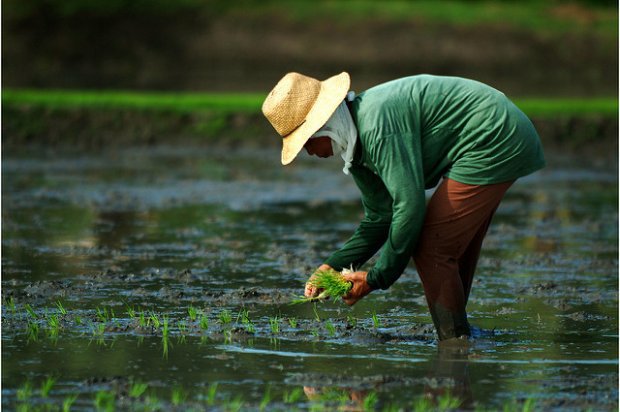Plantations International Information

To compute the amount of globally emissions reductions in farming important to meet the 2 ° C limit, leading setting adjustment as well as likewise farming scientists utilized the 2 ° C circumstance from the Intergovernmental Panel on Atmosphere Modification (< a href=" http://www.ipcc.ch/ "onclick=" __ gaTracker(' send out ',' event ',' outbound-article ', 'http://www.ipcc.ch/',' IPCC');" > IPCC )as well as three incorporated evaluation styles. The anaysis focused on methane and laughing gas wears down from farming, offered anticipated rises in food prodution to satisfy the demands of an expanding population and likewise assuming high emissions cuts in the energy, market as well as transport sectors.In the write-up, scientists suggested that annual exhausts reduces fromagriculture by 2030 need to reach 1 gigatonne of carbon dioxide matchings ( GtCO 2 e/yr )to stay within the 2 ° C limitation. Exhausts decreases would certainlywould certainly must boost in the longer-term. The number below programs approximated business-as-usual discharges from farming in the leading line, and the optimum quantity of exhausts from farming in a 2 ° C world in the lower line. Deep space– – 1 GtCO 2 e/yr – is the advised mitigation target for farming. < img course=" aligncenter size-full wp-image-19621" src=" http://i0.wp.com/www.landscapes.org/wp-content/uploads/2016/05/Asp-Mit-target.jpg?resize=640%2C487" alt=" Asp Mit target" data-recalc-dims=" 1"/ > Lini Wollenberg,
lead writer along with research study leader in reduced exhausts agriculture for CCAFS, describes why the scientists set up the target: Linking the target to a significant worldwide plan goal will certainly supply a recommendation factor for examining contributions to the international decrease required. Determining a purpose for the farming sector can then reveal whether mitigation approaches are on track.” Existing agriculture techniques only provide 21-40% of reduction target Having really established the target, writers afterwards approximated merely exactly how much identified farming interventions can add to discharges reductions. Assuming stable or elevating food efficiency, the authors figured out 2 courses: 1) a technology-by-technology estimate of mitigation potentials, including climate-smart animals, cropland management, in addition to< a href=" https://ccafs.cgiar.org/publications/alternate-wetting-and-drying-irrigated-rice#.Vzp7jseuWao" onclick=" __ gaTracker(' send out',' event',' outbound-article',' https://ccafs.cgiar.org/publications/alternate-wetting-and-drying-irrigated-rice#.Vzp7jseuWao',' paddy rice management');" target=" _ blank" > paddy rice management, and likewise 2) designed worry in pets as well as plant manufacturing, being composed of structural improvements in the livestock sector.They found that tiny tasks, such as lasting surge, to achieve emissions effectiveness will certainly be required, yet not enough, to obtain these targets. As disclosed in the lower two bars in the number listed below, present developments and also climax will only accomplish 21-40% of the reduction target.( These cost quotes are not additive. )< img class =" aligncenter size-full wp-image-19622" src =" http://i0.wp.com/www.landscapes.org/wp-content/plugins/lazy-load/images/1x1.trans.gif" data-lazy-src=" http://i2.wp.com/www.landscapes.org/wp-content/uploads/2016/05/Asp-Mit-Fig-1-Wollenberg-et-al_-2016.jpg?resize=640%2C480" alt=" Asp Mit Fig 1 Wollenberg et al _ 2016" data-recalc-dims=" 1"/ >< img class=" aligncenter size-full wp-image-19622" src=" http://i2.wp.com/www.landscapes.org/wp-content/uploads/2016/05/Asp-Mit-Fig-1-Wollenberg-et-al_-2016.jpg?resize=640%2C480" alt=" Asp Mit Fig 1 Wollenberg et alia _ 2016" data-recalc-dims=" 1 "/ > Immediate investment called for Because of the truth that prominent treatments could accomplish much less compared to half the reduction needed
, scientists needed urgent advancement as well as execution of transformative technological and also policy options. Instances consist of: Worked together study in addition to investment in p romising technical choices, such as methane inhibitiors as well as low-methane enters the livetock field as well as nitrogen inhibitors for significant annual crops.Innovative policies and specs that improve interest for lowered discharges. These are composed of reduced exhausts growth financing in addition to federal government or supply chain assistance forfarmers to accomplish sustainability standards.Support for farmers’ capacity to use new techniques, consisting of finance, motivations, as well as technical assistance.Further research study is required on minimising exhausts throughout the food system, containing: withdrawing soil carbon, enhancing agroforestry and likewise remaining clear oflogging, reducing food loss & & waste as well as changing dietary patterns.Authors noted that dirt carbon sequestration is the largest possible sink that is
compatible with food manufacturing as well as also that decreasing land usage adjustment as a result of removing for farming has huge reduction capacity. However, soil carbon was left out from the examination since information is very variable as well as likewise entails a number of anticipations connected to basic material inputs, carbon-nitrogen percentages, deepness and mass density, as well as timing of saturation. Carbon in biomass, such as agroforestry, was also excluded as the international data is reasonably weak. Co-author Francesco Tubiello, Senior Statistician for the Food as well as Farming Firm of the United Nations( FAO )talks about merely what this suggests: Considerable decrease in the land field is possible through carbon sequestration in biomass and also dusts from reduced logging along with timberland deterioration. But reduction in the land area must be gone after together with productivity gains as well as much better land administration techniques on farming lands for farming as well as rural development as well as also increased food security.Countries’ components in meeting targets As countries additionally meaning and also execution of their environment modification strategies, they ask for accessibility to agronomic info,< a href =" https://csa.guide/ "onclick=" __ gaTracker(' send', 'occasion ',' outbound-article',' https://csa.guide/',' climate-smart agriculture assistance' );" target=" _ blank" > climate-smart agriculture aid, and also models as well as tools that fit the context. Tubiello notes: Nations could possibly take part in trainings as well as utilize readily available< a href=" http://faostat3.fao.org/home/E" onclick=" __ gaTracker(' send',' occasion',' outbound-article', 'http://faostat3.fao.org/home/E',' farming and also land make use of information'); "target =" _ blank " > agriculture as well as additionally land usage data to support evidence-based decision-making to identify feasible mitigation options in the farming as well as land markets, and also their links with sustainable country development.With an aspirational decrease target for farming set, the around the world area and likewise specific countries could look pastjust what is most technically or politically suitable to the exhausts decreases they have to achieve together to restrict environment adjustment to 2 ° C. Plantations International
